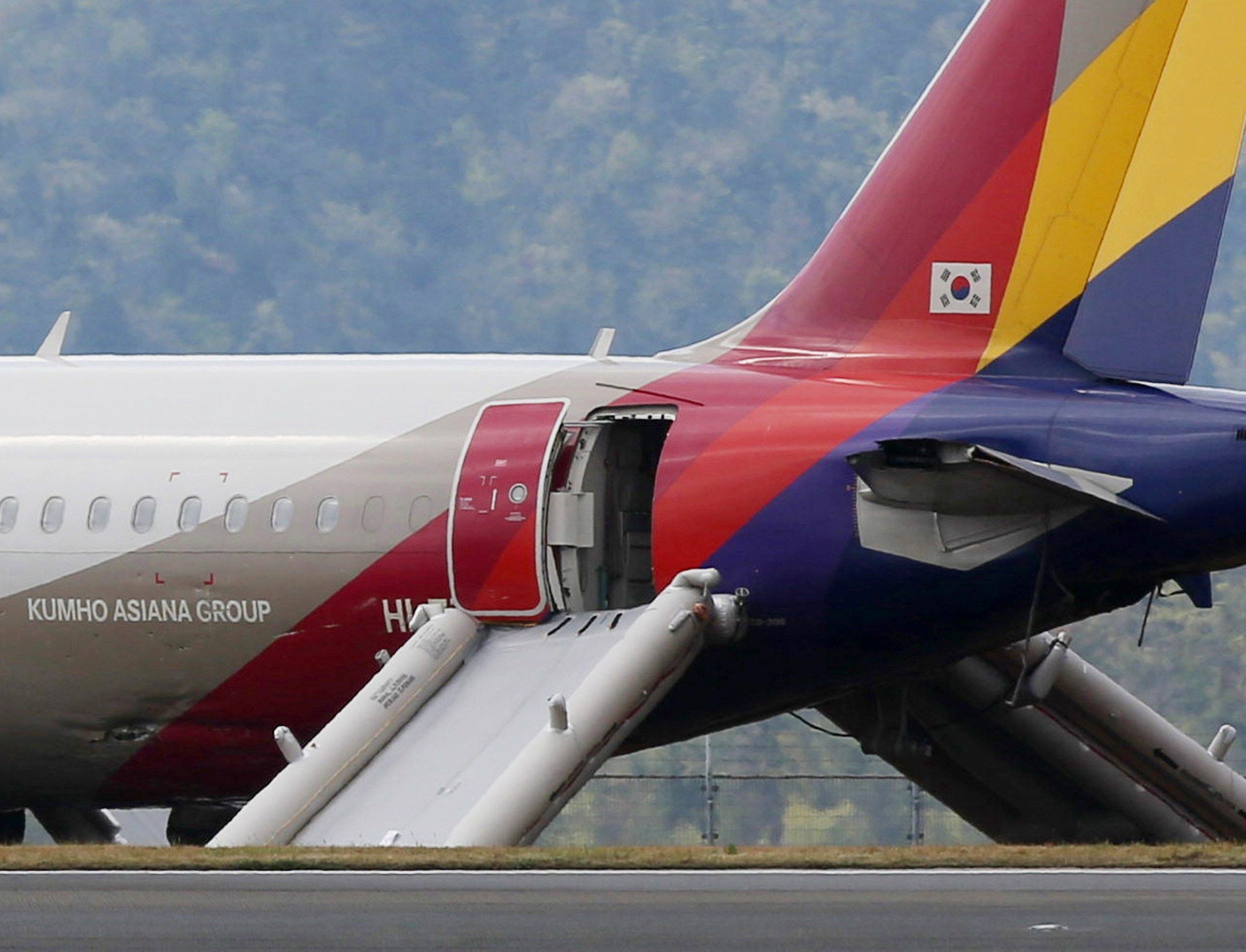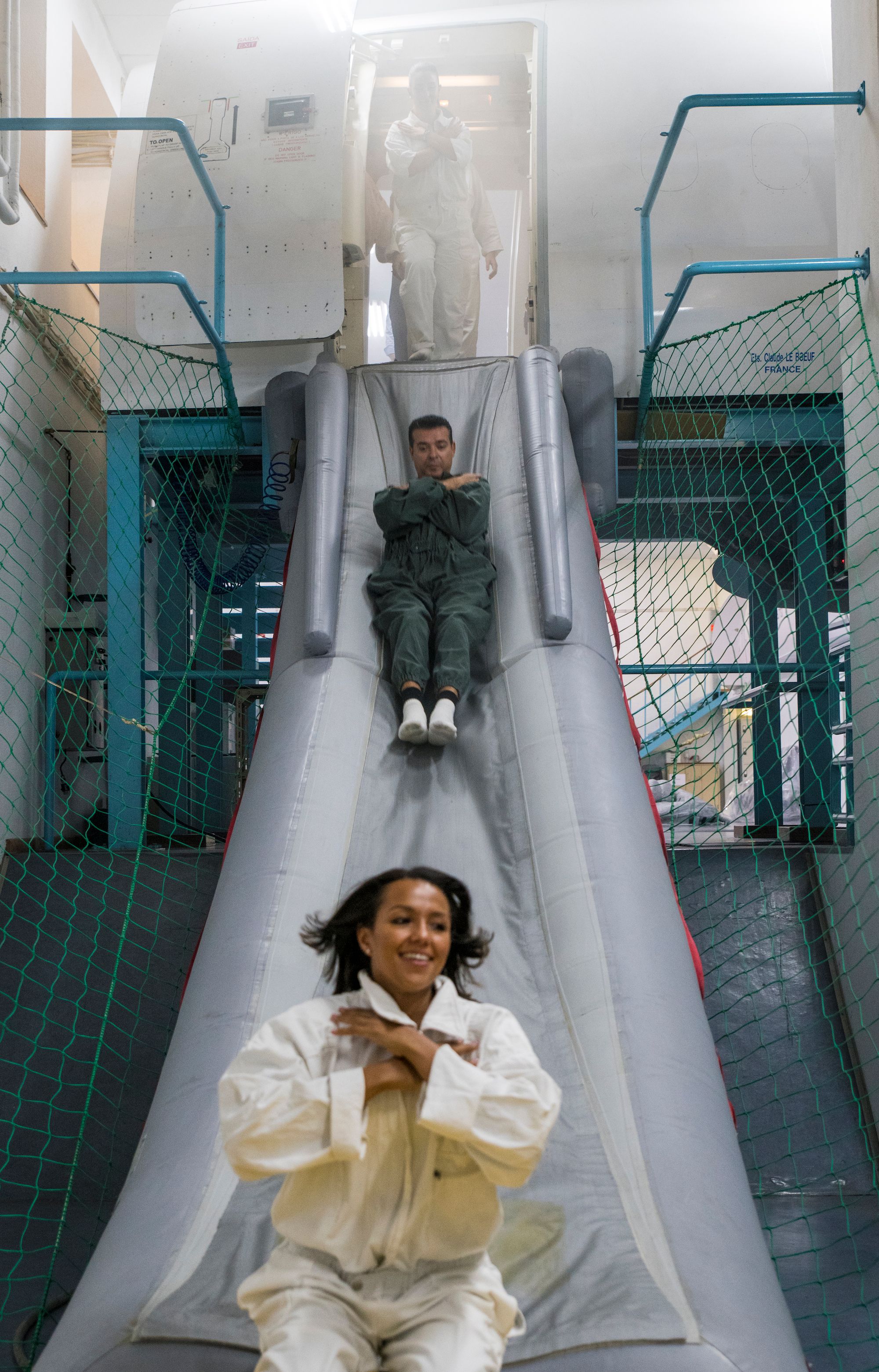As part of the testing of a new aircraft, the manufacturer must demonstrate that all passengers can be evacuated in a short amount of time when an emergency arises - within 90 seconds to be precise. If it doesn’t comply, the aviation authorities won’t approve its safety certification. But where does this 90-second time limit come from?
Post-crash fires
In the early 1960s, research was conducted into the cause and development of fires after an aircraft crash. In April 1964, the Federal Aviation Administration (FAA) crash-tested a Douglas DC-7 transport plane, and in September the same year, followed up with the crash test of a Lockheed L1649. The tests aimed to simulate real crashes that had happened with resulting fatalities.
During these tests, high-speed cameras were set up inside the aircraft and around the crash site to record the effects of the impacts on the planes and the dummy pilots and passengers. The wrecked fuselage of the Lockheed was later used in evacuation tests to examine post-crash survivability.
At the same time, the FAA initiated research into the prevention of two types of post-crash fires. The first was the “fireball,” where escaped fuel creates a mist that ignites and overcomes the plane when it comes to rest. The other was a “flash over” in which the inside of the plane reaches a high enough temperature to ignite instantly. For lives to be saved after a crash, a fireball must be prevented, and the cabin must remain habitable long enough to evacuate passengers.
During the research, it was found that a structurally sound cabin engulfed in flames remained habitable for around two minutes. Beyond that, the heat inside becomes so intense that a flashover condition develops. The flashover point was deemed to be the time available for evacuation.
As a result of the findings, the FAA initially proposed an evacuation time of two minutes. However, further analysis of the tests and additional research led the FAA to reduce the time to 90 seconds.
Improved safety measures
The crash tests initiated by the FAA resulted in many improvements to the safety of aircraft. The design of fuel tanks was improved to tolerate higher impacts and reduce fire risks. Other requirements included evacuation slides deployable in 10 seconds, improved interior lighting, better distribution of exits, extra emergency exits, self-extinguishing interior materials, and the protection of electric cables and fuel lines.
Stay informed: Sign up for our daily and weekly aviation news digests.
How realistic are evacuation tests?
Aircraft manufacturers must conduct a full-scale emergency evacuation demonstration and make them as realistic as possible. The test is carried out with the plane's maximum occupancy with a full crew and a representative mix of passengers. Meanwhile, dolls are used to simulate children.
Only half the exits are used, and baggage, pillows, etc., are strewn in the aisles to simulate debris. While the ‘passengers’ know why they are there, they are not told the evacuation plan, which doors and slides will be used, or when the demonstration will start. Thus, it sounds like many variables are included to create a "messier" real-world scenario.
In 2006, an Airbus A380 completed its passenger evacuation trial paving the way for its certification. In the demonstration, 873 people successfully left the aircraft and reached the ground within the 90-second time limit. It was the most stringent evacuation ever conducted and the first on a two-deck passenger aircraft. The test was also carried out in the darkness.
The tests are conducted to demonstrate that the aircraft can be evacuated in the minimum time prescribed by the authorities. However, the participants in the trials know that their lives aren’t in danger. What they can’t factor in is the behavior of people in a real-life panic situation. In a life-threatening emergency, it's possible that not everyone will act rationally.
Did you know about this evacuation time limit? Let us know by leaving a comment.



